- Email:info@tsv-valve.com

 Sep 09,2025
Sep 09,2025As the ultimate safety protection device for pressure-bearing equipment such as boilers, pressure vessels and pipelines, the core function of a safety valve is to automatically open and relieve pressure when the system is over-pressurized, preventing equipment from exploding or other serious accidents due to overpressure.
In the design, calibration and operation of safety valves, the set pressure, relieving pressure and re-seating pressure are the three most critical pressure parameters. These three parameters are all independent of each other and have strict logical relationships, jointly determining the protection performance of the safety valve and the safety of the system.
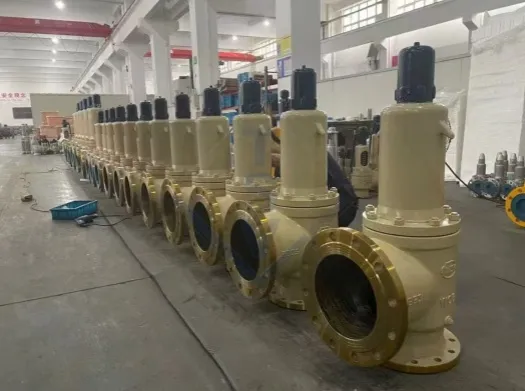
Set pressure refers to the predetermined pressure at which a safety valve begins to open under operating conditions, also known as "opening pressure".
It is a core design parameter of the safety valve and needs to be determined based on the maximum allowable working pressure (MAWP) of the protected equipment. Usually, the set pressure does not exceed the design pressure of the equipment.
For example, if the design pressure of a certain pressure vessel is 1.6 MPa, the set pressure of the corresponding safety valve may be set at 1.6 MPa (or slightly lower than the design pressure, which needs to comply with the specifications).
The numerical value of the set pressure is determined by factors such as the spring stiffness, the accuracy of the valve disc and valve seat fit, and needs to be precisely adjusted through a calibration bench.
The relieving pressure refers to the inlet pressure when the valve disc of the safety valve reaches the fully open state. When the system pressure reaches the set pressure, the safety valve begins to open, but at this point, the valve disc only slightly rises and the discharge volume is relatively small.
As the system pressure continues to increase, the valve disc gradually rises until it reaches the fully open state (at this point, the flow channel area is the largest), and the corresponding pressure is the relieving pressure.
The relieving pressure must be higher than the set pressure, and the difference between the two is called the "opening height pressure difference", which is related to the structure form of the safety valve (such as spring type, pilot type) and the opening height (micro-opening type, full-opening type).
For example, the relieving pressure of a full-lift safety valve is usually 3% to 10% higher than the set pressure (specifically, it should comply with ASME, GB and other standards).
The re-seating pressure refers to the inlet pressure when the safety valve stops discharging and the valve disc recontacts the valve seat after the system pressure drops to a certain value during the discharge process.
The re-seating pressure must be lower than the set pressure; otherwise, the safety valve will fail to close promptly after opening, resulting in continuous leakage of the medium.
The difference between the two is called the "re-seating pressure difference". Usually, the re-seating pressure is 80% to 90% of the set pressure (different standards have different regulations; for example, GB/T 12243 requires the re-seating pressure to be no less than 90% of the set pressure, and special conditions can be relaxed).
The intrinsic relationship among the three parameters:
The logical relationship among the three can be summarized as follows: The set pressure is the "start threshold" of the safety valve, the relieving pressure is the "pressure point for full pressure relief", and the re-seating pressure is the "reset point for stopping the pressure relief". These three elements occur in sequence according to the rule of "set pressure < relieving pressure > re-seating pressure", forming a complete "open - discharge - close" cycle.
Correlation 1: The sequence of pressure triggering
When the system pressure rises, it first reaches the set pressure and the safety valve begins to open; as the pressure continues to rise to the relieving pressure, the safety valve fully opens and reaches the maximum discharge volume; when the system pressure drops to the re-seating pressure due to discharge, the safety valve closes, completing one protection cycle.
The pressure values of the three must satisfy the conditions that "set pressure < relieving pressure" and "re-seating pressure < set pressure". Otherwise, faults such as "unable to open", "unable to fully discharge after opening", or "leakage after closing" may occur.
Correlation 2: Performance Interaction
The set pressure directly determines the benchmark for the relieving pressure - the relieving pressure cannot be infinitely higher than the set pressure (otherwise it would cause excessive system overpressure, posing a threat to equipment safety). The deviation of the two should be limited by standard (as stipulated in ASME BPVC Section I, for example, the relieving pressure of a spring-loaded safety valve shall not exceed 1.1 times the set pressure).
At the same time, the difference between the re-seating pressure and the set pressure also needs to be properly controlled: if the re-seating pressure is too high (close to the set pressure), it may cause the safety valve to frequently open and close (“vibrating”) due to system pressure fluctuations, thereby accelerating the wear of the sealing surfaces; if the re-seating pressure is too low, it will result in an excessively long discharge time, waste of the medium or excessive drop in system pressure.
Correlation 3: Joint Impact on the Protective Effect of Safety Valves
The set pressure determines when the safety valve will intervene for protection, the relieving pressure determines the efficiency of pressure relief (whether the system pressure can be rapidly reduced), and the re-seating pressure determines whether the system can resume normal operation after the protection is over.
The three components need to be coordinated and matched: For instance, if the set pressure is too high, it may result in the equipment not being protected in the initial stage of overpressure; if the relieving pressure is insufficient (not fully opened), the discharge volume will be insufficient and cannot effectively reduce the pressure; if the re-seating pressure is abnormal, it may lead to excessive or insufficient protection.
Low re-seating pressure of the safety valve refers to the re-seating pressure of the safety valve being much lower than the set pressure (for example, lower than 80% of the set pressure). This situation can cause a series of serious hazards to the protected system under overpressure conditions, involving multiple aspects such as equipment safety, operational efficiency, and medium loss.
1.The system pressure has been excessively reduced, which affects its normal operation.
The core function of a safety valve is to "keep the system pressure within a safe range", rather than to "reduce the pressure to the minimum". When the re-seating pressure is too low, the safety valve will only close when the system pressure is far below the set pressure, resulting in an excessive drop in system pressure and deviation from the normal working pressure range.
For industrial production systems (such as chemical reaction vessels, steam pipelines), excessive pressure reduction may lead to a decrease in reaction rate, production interruption, and even a phase change of the medium (such as steam condensing into water), causing pipeline water hammer.
For power systems (such as boiler feedwater pipelines), excessive pressure reduction will result in insufficient power output, affecting the normal operation of equipment (such as steam turbines), and even requiring shutdown and restart, causing economic losses.
2. Excessive emission of the medium leads to waste of resources and environmental pollution.
If the re-seating pressure is too low, it will prolong the discharge time of the safety valve, resulting in a large amount of media (such as steam, natural gas, chemical raw materials) being discharged meaninglessly to the outside, causing serious waste of resources.
For energy-related media (such as steam, gas), excessive discharge directly increases the energy consumption cost of the enterprise and violates the energy-saving requirements;
For toxic, harmful or corrosive media (such as chlorine, hydrogen sulfide, acid and alkali solutions), excessive discharge will exceed the carrying capacity of the environmental protection treatment system, leading to the leakage of toxic substances, polluting the environment, and even threatening human health.
For example, if acidic media in a chemical enterprise are discharged in large quantities due to too low re-seating pressure, it may cause pollution to the surrounding soil and water bodies, violating environmental protection regulations.
3. Frequent impacts between the valve disc and the valve seat lead to accelerated wear of the sealing surfaces.
When the safety valve is opened, the valve disc rises rapidly under the pressure of the medium; when it is closed, the valve disc quickly falls back under the force of the spring, coming into contact with the valve seat.
If the re-seating pressure is too low, the system pressure needs to be reduced to an even lower value to close the valve. At this time, the closing speed of the valve disc and the valve seat is faster, and the impact force is greater, which is likely to cause mechanical damage to the sealing surfaces (such as the sealing ring of the metal sealing surface, the rubber pad of the soft sealing surface). Long-term and frequent impacts can lead to scratches, deformation or fatigue cracks on the sealing surfaces, reducing the sealing performance of the safety valve and causing the problem of "not closing tightly". Even under normal working pressure, medium leakage may occur, further exacerbating resource waste and safety hazards.
For high-temperature and high-pressure working conditions (such as safety valves of power station boilers), if the sealing surfaces are worn, it may cause metal fusion welding (due to the contact and adhesion of metals at high temperatures), completely deactivating the safety valve. It requires shutdown for maintenance, seriously affecting the continuous operation of the system.
4. Fluctuations in system pressure may lead to the risk of "secondary overpressure".
Insufficient re-seating pressure can cause the system pressure to drop excessively after depressurization, and when the system resumes pressurization, it may reach the set pressure of the safety valve again due to an overly rapid pressurization rate (such as continuous operation of heating equipment or excessive medium supply), triggering the secondary opening of the safety valve.
This "opening-closing-reopening" frequent action is called "safety valve flutter", which can lead to the following problems: Frequent opening and closing will cause the spring to lose its stiffness due to fatigue, resulting in a drift in the set pressure (such as a decrease in the set pressure), causing the protection threshold of the safety valve to be out of control;
The secondary overpressure may cause the system to undergo multiple pressure shocks within a short period of time, reducing the fatigue life of the equipment. Especially for pressure vessels and pipelines, which are pressure-bearing components, frequent pressure fluctuations may lead to crack propagation and eventually result in an explosion accident.
5. Affects the stability of the interlocking system and leads to incorrect operations
In modern industrial systems, safety valves are usually operated in conjunction with pressure interlock devices (such as pressure transmitters, emergency shutdown systems ESD).
When a safety valve continuously discharges due to excessively low re-seating pressure, the system pressure remains at a low level for an extended period, which may trigger the "low pressure alarm" or "emergency shutdown" instructions of the interlock system, resulting in unnecessary system shutdowns. For example, in the distillation tower system of an oil refinery, if the re-seating pressure of the safety valve is too low causing the internal pressure of the tower to remain consistently low, it may trigger the ESD system to close the feed valve, causing production to be interrupted. Restoring production would require a significant amount of time and cost;
Frequent false alarms also reduce the operators' trust in the interlock system, potentially leading to the manual disabling of the interlock function, thereby creating even greater safety hazards.
6. The low-temperature medium system is at risk of freezing blockage.
For systems involving low-temperature media (such as liquefied natural gas, liquid oxygen, and liquid nitrogen), if the re-seating pressure is too low, it will cause the safety valve to have a longer discharge time. A large amount of low-temperature medium will flow through the valve disc and the pipeline, which may cause the valve body and the surrounding pipelines to experience a sudden drop in temperature. Water in the air will condense and freeze on its surface, forming an ice blockage. The ice blockage will clog the flow path or the sealing surface of the safety valve, resulting in the safety valve being unable to open normally (malfunctioning during the next overpressure event) or close (continuous leakage);
If the ice blockage occurs at the gap between the valve stem and the valve body, it may cause the valve stem to become stuck, completely losing the regulating ability of the safety valve. The system must be shut down for thawing before it can be restored, which will seriously affect the safety and reliability of the system.
The insufficient re-seating pressure is not an isolated phenomenon. It is usually associated with design flaws of the safety valve, improper installation, lack of maintenance, or abnormal operating conditions:
Design flaws: Insufficient spring stiffness (unable to provide sufficient closing force), mismatch in the angle between the valve disc and the valve seat sealing surface, excessive clearance in the guide sleeve (causing the valve disc to deviate), etc., all may result in a lower backseat pressure;
Installation issues: Excessive resistance at the safety valve inlet pipeline (such as too small pipe diameter, too many bends) will cause the pressure before the valve to be lower than the actual system pressure, affecting the re-seating pressure;
Maintenance deficiencies: Presence of impurities on the sealing surface (such as rust, medium crystallization), fatigue and aging of the spring, valve disc wear, etc., will reduce the closing sealing performance of the safety valve, leading to a decrease in the backseat pressure;
Abnormal operating conditions: Presence of a large amount of particles in the medium (accelerating sealing surface wear), sudden changes in system pressure (such as rapid heating, sudden unloading), may cause the backseat pressure to be unstable.
Preventive measures include:
1. Design and select components strictly in accordance with the specifications, ensuring that the spring stiffness, sealing surface structure, and working conditions are compatible.
2. Regularly calibrate the safety valve (at least once a year), adjust the set pressure and re-seating pressure using the calibration table, and ensure compliance with standards.
3. Strengthen daily maintenance, regularly clean the sealing surfaces and inspect the spring condition to prevent the accumulation of impurities or component aging.
4. Optimize the operating conditions of the system to avoid drastic pressure fluctuations and reduce the frequency of the safety valve's frequent opening and closing.
The set pressure, relieving pressure and re-seating pressure of the safety valve are interrelated core parameters that collectively form the complete protection cycle of the safety valve - "opening - discharging - closing":
The set pressure is the starting point, the relieving pressure is the efficient pressure relief point, and the re-seating pressure is the reset point. The values of these three must strictly comply with the standard requirements to ensure the safety of the system. Under overpressure conditions, a too low re-seating pressure poses extremely serious hazards. It not only causes excessive pressure reduction in the system, excessive emission of the medium, and increased equipment wear, but also may trigger secondary overpressure, interlock maloperations and other chain reactions, and even threaten personnel safety and the environment.
Therefore, in the design, calibration and maintenance of safety valves, great attention must be paid to the control of the return pressure. Through scientific selection, regular calibration and standardized operation, ensure that it is within a reasonable range and fully exert the safety protection function of the safety valve.
Related News
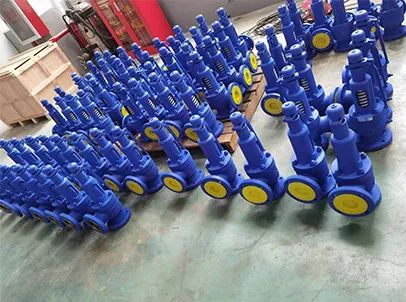
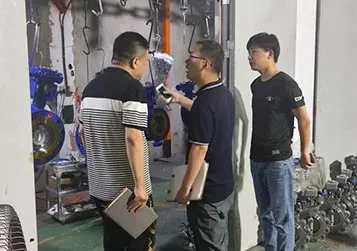
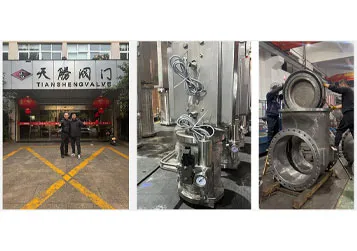
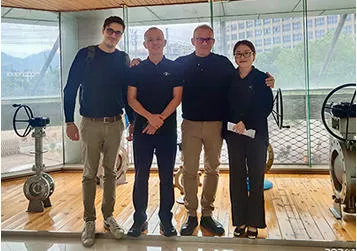
GET A QUOTE
Talk to Our Expert